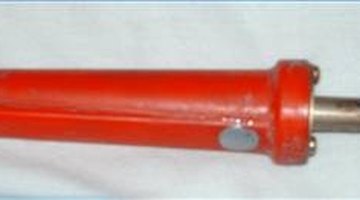How to Replace Resistors
Resistors are electrical components that serve to restrict the flow of current. When electrical current flows across a resistor, there is a voltage drop. This voltage drop can serve many electronic purposes, such as developing a voltage difference in order to turn a transistor on or off.

Things You Will Need
- Diagonal cutters
- Soldering iron
- Solder
- Needle nose pliers
Resistors are easy to find if they have become defective because they can be measured with the electronic device turned off. Once a resistor is found to be defective, replacing it can return the electronic device to correct operation.
-
Make sure you're going to replace the resistor that's defective. Calculate its value based on the color bands that encircle the trunk of the resistor. Measure its resistance with an ohmmeter. The vast majority of defective resistors become open; that is, an ohmmeter will measure its resistance as being infinite.
-
Take the circuit board on which the resistor is soldered and cut the wire leads with diagonal cutters. Remove the defective resistor.
-
Turn on the soldering iron. Place the tip on the lead and the pad through which the lead is placed until the solder melts. Once the solder melts, remove the cut lead with needle nose pliers.
-
Ensure the new resistor has the correct value. Measure it with an ohmmeter. After you know its value is correct, place the leads through the pads that the old resistor had come from. There is no polarity with resistors, so it doesn't matter which end goes into a particular pad.
-
Hold a short piece of solder with needle nose pliers against the resistor lead where it meets the pad and apply the soldering iron tip to melt the solder. Repeat for the other resistor lead.
-
Turn the soldering iron off. Measure the resistor to ensure it's still the correct value.
Tip
There may be an underlying reason as to why the resistor became defective, such as excessive current flow. If the new resistor becomes defective, too, you'll have to troubleshoot the circuit to find out why it's burning out the resistors.
Warning
Soldering irons are very hot and can burn skin. They should be used with great care. Make sure it's turned off after use.
Resources
Tips
- There may be an underlying reason as to why the resistor became defective, such as excessive current flow. If the new resistor becomes defective, too, you'll have to troubleshoot the circuit to find out why it's burning out the resistors.
Warnings
- Soldering irons are very hot and can burn skin. They should be used with great care. Make sure it's turned off after use.
Writer Bio
Doug Hewitt has been writing for over 20 years and has a Master of Arts from University of North Carolina-Greensboro. He authored the book "The Practical Guide to Weekend Parenting," which includes health and fitness hints for parents. He and his wife, Robin, are coauthors of the "Free College Resource Book."
Photo Credits
- Wikimedia Commons
- Wikimedia Commons
More Articles



